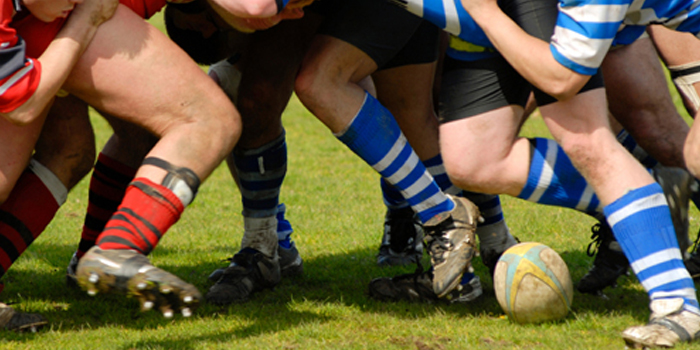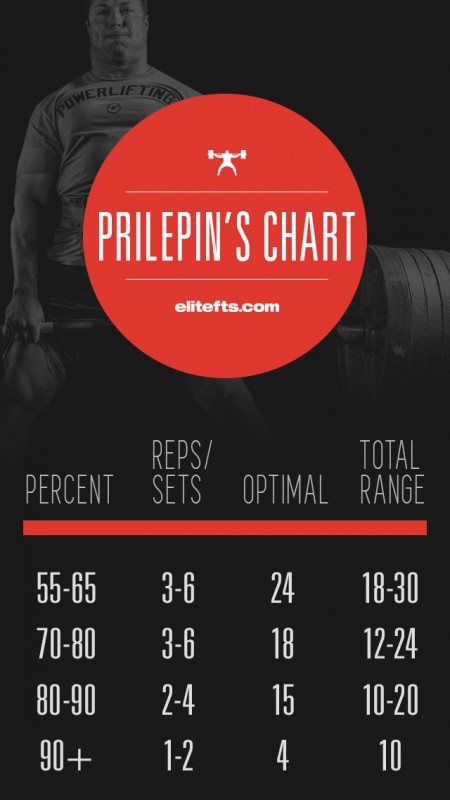
I have regularly used the 30’s Method for accessory training after completing main lifts, especially when I am in a hypertrophy phase. The 30’s Method uses a total number of reps rather than a prescribed sets and reps protocol. With this method, use a weight equivalent to your 6RM and stay with the same weight for the duration of the 30 reps. Rest is 30-45 seconds between sets. Keep track of the number of sets it takes you to complete the 30 reps and you can vary the density of the program by starting with the 45 seconds recovery between sets and working your way down to 30 seconds recovery over a three or four week time period.
Recently, I read some of Chad Waterbury’s work where he suggested other similar methods with the same principle, using both 20-rep totals with your 4RM weight and also 40-rep totals using your 8RM weight. Rest periods were 30 seconds between sets for the 20-rep total and 45 seconds for the 40-rep method.
RECENT: The Complete 2016 Off-Season Rugby Training Manual
After reading this excellent article, from an author I hold in very high regard, I had an idea. Why not extend this method out to cover the two extremes of the continuum with both 10 reps and 50 or 60 reps and align these methods with Prilepin's Chart to see if the principles hold true? The 10-rep total utilizes your 2RM, while the 50-rep total uses your 10RM loading. 60 reps would use your 12RM.
Poliquin as long ago as 1986 came up with an excellent chart referencing rep-max loading to percentage of maximum, which is an excellent starting point from which to assess your loadings for the programming I am outlining in this article.
- 2RM = 95%
- 4RM = 88%
- 6RM = 83%
- 8RM = 78%
- 10RM = 75%
- 12RM = 70%
When you compare these methods, they fall into some interesting categories of training goals, especially when you consider the rest periods between each set. My groupings for these would be:
- Strength: 10 reps at 2RM resting 30 seconds between sets. 20 reps at 4RM resting 30 seconds between sets
- Strength and Size: 30 reps at 6RM resting 45 seconds between sets. 40 reps at 8RM resting 45 seconds between sets
- Size: 50 reps at 10RM resting 60 seconds between sets. 60 reps at 12RM resting 60 seconds between sets
These methods fit the criteria for effective strategies in stimulating both testosterone and growth hormone where the considerations for stimulus are:
- Utilizing compound exercises that involve large numbers of muscles
- Resistance loading above 80%
- Volume of the stimulus in respect to intensity that is moderate to high
- Keeping rest periods short with 60 seconds or less between sets
Relating Prilepin’s Chart to this training strategy allows us to draw considerable similarities at the top end of the chart. Allowing for a margin of error, I would suggest that the 10’s, 20’s and 30’s methods are near enough to be fully aligned with Prilepin's Chart. Difficulties arise with the greater volume of the other three methods, since Prilepin was relating his finding more to the development of maximal strength and power and not hypertrophy. Scott Dixon tweaked the table to be more hypertrophy-specific and is well worth considering if this is a major goal. Also, when you speak to bodybuilders and analyze how they train, it is of course geared towards higher volumes while maintaining specific percentages of maximum.
In summary, I would suggest you try a training block utilizing the methods above. Pairing two ends of the spectrum would work ideally for gains in size and strength. As an example, here is what I would suggest for a block of training for your upper body:
Upper Body Pushing
- Primary Push (Bench Press): 10 reps at 2RM, 95% of max, 30 seconds rest between sets.
- Secondary Push (Incline DB Press): 60 reps at 12RM, 70% of max, 60 seconds rest between sets.
Upper Body Pulling
- Primary Pull (Weighted Chins): 20 reps at 4RM, 88% of max, 30 seconds rest between sets.
- Secondary Pull (Single-Arm DB Row): 50 reps at 10RM, 75% of max, 45 seconds rest between sets.
As always, I would be very interested in hearing how you progress by training in this style.












Is it now your view that it is better to split upper body days over the week into push one day and then pull the next.
I have been using a 4 day upper lower split, with the 2 upper body days containing both push and pull movements.
E.g
Upper day 1
Heavy Vertical Push
Heavy Vertical Pull
Light Horizontal Push
Light Horizontal Pull
Upper Day 2
Heavy Horizontal Push
Heavy Horizontal Pull
Light Vertical Push
Light Vertical Pull
Would be interested to get your thoughts on this set up. And whether you would add any other movement patterns in there.
Thanks Ash, always thrilled to see your new articles.
Cheers
David
You can utilize lower rep maxes for strength stuff and higher stuff for pump/BBing work.
Love this stuff.
I like it. I'll have to try the 50s and 60s.
http://images.slideplayer.com/13/3977323/slides/slide_5.jpg
Always great to log on and see that you have a new article up. If there's one thing your writing always does, it's drive discussion in these areas.
I love using this idea, especially with a training partner. I was introduced to it by someone almost inadvertently. He never wanted to hear "we're doing 4 sets of 6-10 reps", we would simply pick a weight and total reps, then we'd basically alternate sets and 'race' to the finish. The result was short, intense workouts with very good strength and size gains. A little friendly competition never hurt! Just another good tool to add to the toolbox.
Anyway, cheers for the writings. I'm learning and have learnt a heck of a lot from your sharing your ideas with us. It's a great way to access knowledge and experience most of us would otherwise not come across.
Cheers
I have struggled to balance pure strength with conditioning for Rugby and I think this is a great program. My question is how would you progress on this program?
So if I do my 30 based on 6RM, retest the 6RM- or bump the weight up when I'm able to hit the 30 in a target number of sets? Just curious as to your thoughts on progression.
Cheers,
Kyle
Table 1: Relationship between maximum number of reps, intensity and training effect (Poliquin,1990)
Relative Strength increases through enhanced neural drive:
1 rep = 100% duration of set(s): 0-20 seconds
2 = 94.3
3 = 90.6
4 = 88.1
5 = 85.6
Optimal compromise of maximal strength and hypertrophy gains:
6 reps = 83.1% duration of set(s): 20-40 seconds
7 = 80.7
8 = 78.6
Best hypertrophy gains leading to increased max strength:
9 reps = 76.5% duration of set(s): 40-70 seconds
10 = 74.4
11 = 72.3
12 = 70.3
Strength-endurance gains and lower hypertrophy gains:
13-20 reps = 68.8-60.6% (roughly 1.2/1.3% lower per rep) duration of set(s): greater than 70 seconds
Great article once again.
Would like to get some enquiries answered from your end with regards to my own training as season for me would begin in two and a half more months.
Hope you could drop me a mail at kchia007@e.ntu.edu.sg
Have some questions and advice i would like pertaining to my strength size conditioning I have to get going.
hope to hear you. my mails : kchia007@e.ntu.edu.sg
appreciate bud.
Just a quick question about cluster sets. If I were going to use around 87.5% of my training max on a given exercise, how would you program the cluster training? Into 4 mini sets of 2 reps with 15 second breaks, or in some other fashion? Just looking for a different perspective to set my training up correctly